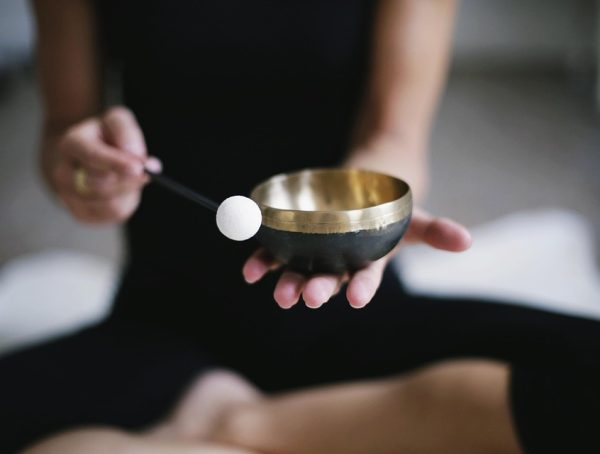Breathing Techniques: Meditation to Calm Anxiety
In today’s fast-paced world, anxiety has become a common ailment. With the demands of life constantly pulling us in different directions and the impact of social media heightening our stress levels, it’s easy to feel overwhelmed. Fortunately, one of the simplest and most accessible tools we can cultivate to manage anxiety is our breath. Breathing techniques, often intertwined with meditation, can profoundly shift our mental state and provide a sense of calm. Let’s dive into how these techniques work, the benefits they offer, and detailed action steps you can incorporate into your daily routine for effective anxiety management.
Understanding the Connection Between Breath and Anxiety
The breath is the bridge between the mind and body. When we breathe deeply and consciously, we signal to our body that it’s safe to relax. Conversely, shallow or rapid breathing—common during moments of anxiety—can trigger the body’s stress response, resulting in increased heart rate and tension.
Research suggests that breathing techniques can help regulate the autonomic nervous system, promoting relaxation and reducing anxiety. Through controlled breathing, we can essentially “hack” our response to stress and cultivate a calm and centered mindset.
Benefits of Breathing Techniques
-
Reduces Stress Hormones: Engaging in deep breathing decreases levels of cortisol, the body’s primary stress hormone.
-
Enhances Mental Clarity: Improved oxygen flow to the brain can elevate mood, enhance focus, and foster clearer thinking.
-
Promotes Mindfulness: By concentrating on the breath, practitioners can cultivate mindfulness, leading to a better awareness of the present moment and reducing ruminative thoughts.
-
Improves Sleep: Techniques that involve relaxing the body can help ease the transition into sleep, combating insomnia often exacerbated by anxiety.
- Improves Physical Health: Consistent practice can lead to improvements in blood pressure, lower heart rates, and reduced tension in the body.
Action Steps to Incorporate Breathing Techniques
Step 1: Find a Comfortable Space
Start by choosing a quiet and comfortable place where you won’t be disturbed. This could be a cozy corner in your living room, a peaceful spot in a park, or even your office after hours. Sit in a chair with your feet flat on the ground, or cross-legged on the floor, whichever feels more comfortable for you.
Step 2: Set a Timer
Decide how long you’d like to practice. If you’re new to breathing techniques, consider starting with just five minutes. As you become more accustomed, you can extend your practice time to 10 or 15 minutes.
Step 3: Close Your Eyes and Ground Yourself
Close your eyes gently. Take a moment to ground yourself. Imagine roots extending from your body into the earth below. This visualization can help you feel anchored and connected to the present moment.
Step 4: Develop a Breathing Pattern
Here are a few breathing techniques you can explore:
1. Diaphragmatic Breathing (Belly Breathing)
- Place one hand on your chest and the other on your stomach.
- Inhale deeply through your nose, allowing your abdomen to rise (your chest should remain relatively still).
- Exhale slowly through your mouth or nose, feeling your abdomen fall.
- Repeat this cycle for several minutes, focusing on the rhythm of your breath.
2. Box Breathing
- Inhale deeply through your nose for a count of four.
- Hold your breath for a count of four.
- Exhale slowly through your mouth for a count of four.
- Hold your breath for another count of four.
- Continue this pattern for a duration that feels comfortable.
3. 4-7-8 Breathing
- Inhale through your nose for a count of four.
- Hold your breath for a count of seven.
- Exhale slowly through your mouth for a count of eight.
- Repeat this cycle several times.
Step 5: Focus on the Sensation of Your Breath
As you practice the chosen technique, focus your attention fully on your breathing. Notice the sensation of air entering and leaving your body. If your mind begins to wander, gently bring your focus back to your breath without judgment.
Step 6: Reflect on Your Experience
After your session, take a moment to reflect. How do you feel? Were there moments of clarity? Did any emotions surface? Keeping a journal to note your thoughts after each session could help you track your progress and deepen your understanding of how breathing techniques affect your emotional state.
Step 7: Incorporate Breath Work into Daily Life
One of the best aspects of breathing techniques is their portability. You can practice them anywhere—at your desk, during a commute, or even in line at the grocery store. Whenever you feel anxiety creeping in, take a moment to pause and engage in a few cycles of deep breathing.
Conclusion
Breathing techniques intertwined with meditation can be powerful allies in managing anxiety. With consistent practice, you can train your body and mind to respond to stressors with calm and reassurance. The best part? You have a tool available to you at all times.
Remember, anxiety is a natural response, but you don’t have to let it control your life. Embrace the power of your breath, and you may find yourself navigating life’s challenges with greater ease and grace.
As you embark on this journey of calming anxiety through breath, remind yourself:
"Breathe in the future, breathe out the past." – Anonymous
For more insights on health and wellness, don’t forget to follow Kevin on Instagram @KSteineman!
You might also like
More from Meditation
The Role of Mantras in Transcendental Meditation: A Deep Dive
The Role of Mantras in Transcendental Meditation: A Deep Dive Transcendental Meditation (TM) has garnered a significant following across the globe, …
The Science Behind Meditation: Improving Mental Health Naturally
The Science Behind Meditation: Improving Mental Health Naturally In today's fast-paced world, the pursuit of mental wellness has become paramount. Thousands …
Understanding the 7 Types of Meditation for Beginners
Understanding the 7 Types of Meditation for Beginners: A Path to Inner Peace Meditation has become a popular practice in recent …


































